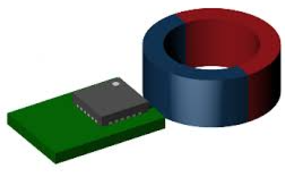Other Parts Discussed in Thread: TMAG6180, TMAG5170-Q1, TMAG5253, TMAG5170, DRV5055, LDC5072-Q1
Tool/software:
Hello Team,
we want to develop sin cos off axis encoder. your chip TMAG6180-Q1 suits to our application ,it matches all our requirement accept off axis.
can you recommend any other chip similar to this but off axis (snapshot shown below, it should able to sense from side of magnet and have supply rating of 5V

